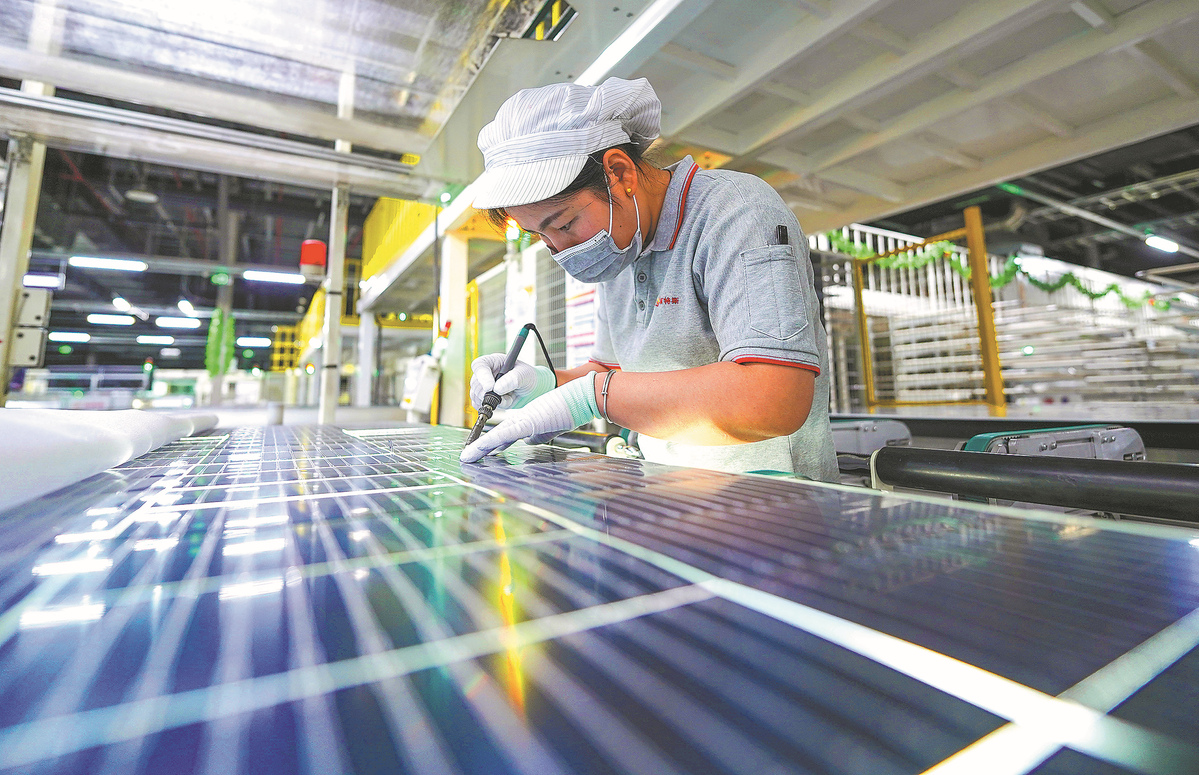
An employee works on a solar panel production line in Suqian, Jiangsu province. CHEN SHAOSHUAI/FOR CHINA DAILY
The growth of China's new energy industry is closely aligned with significant anticipated demand in the sector, and the country has already created a favorable environment for international participation, said a report released by the Development Research Center (DRC) of the State Council on Monday.
The new energy sector focuses on developing and utilizing alternative energy sources that are more sustainable and environmentally friendly than traditional fossil fuels. This includes electric vehicles, solar and wind power, energy storage and hydrogen energy.
The study — China Development Report 2024 — said major players such as Tesla from the United States, BMW and Mercedes-Benz from Germany, and Japan's Toyota have all set up EV production facilities in China.
Xu Wei, head of the DRC's macroeconomic research department, said that the new energy sector is in a rapid growth phase in China, with capacity building primarily aiming at meeting expected future demand.
It shouldn't be simply judged as "overcapacity" based solely on current demand, said Xu, adding that industry competition and trade frictions between countries are inevitable. This is a natural part of global economic interactions.
However, using the "overcapacity" argument to justify restricting exports of China's new energy products will only delay the development of the global new energy sector, slow technological progress, and hinder the global green and low-carbon transformation process, he added.
According to the International Energy Agency, global demand for EVs is expected to reach 45 million units by 2030, about four times the level in 2022.
In addition to importing a large number of EVs from other parts of the world — especially Germany — China imports a large quantity of high-end EV components, including lighting, braking systems, tires and shock absorbers. Chinese exports also include many products manufactured by foreign companies, according to the DRC's report.
For instance, Tesla alone accounted for 28.6 percent of China's EV exports in 2023, said the study.
"China's well-established supply chain and infrastructure for the new energy industry have made it easier for foreign companies to set up operations and integrate into local ecosystems," said Chen Jianwei, a researcher at the Beijing-based University of International Business and Economics' Academy of China Open Economy Studies.
Echoing that sentiment, Sun Fuquan, a researcher at the Beijing-based Chinese Academy of Science and Technology for Development, said that more than half of global green and low-carbon technologies remain underdeveloped, creating a significant gap between growing demand for low-carbon development and the limited supply of affordable green technologies. This disparity hinders global progress in tackling climate change.
"China, through its own efforts, has found viable technological pathways for decarbonization in the energy and transportation sectors," said Sun. "By applying these technologies on a large scale, the country has significantly reduced the cost of new energy products."
China's new energy vehicle exports amounted to 1.14 million units during the January-November period, marking a year-on-year increase of 4.5 percent, said the China Association of Automobile Manufacturers.
Source: By Zhong Nan, chinadailly.com, Dec 17, 2024 [https://www.chinadaily.com.cn/a/202412/17/WS6760d5f4a310f1265a1d3489.html]

